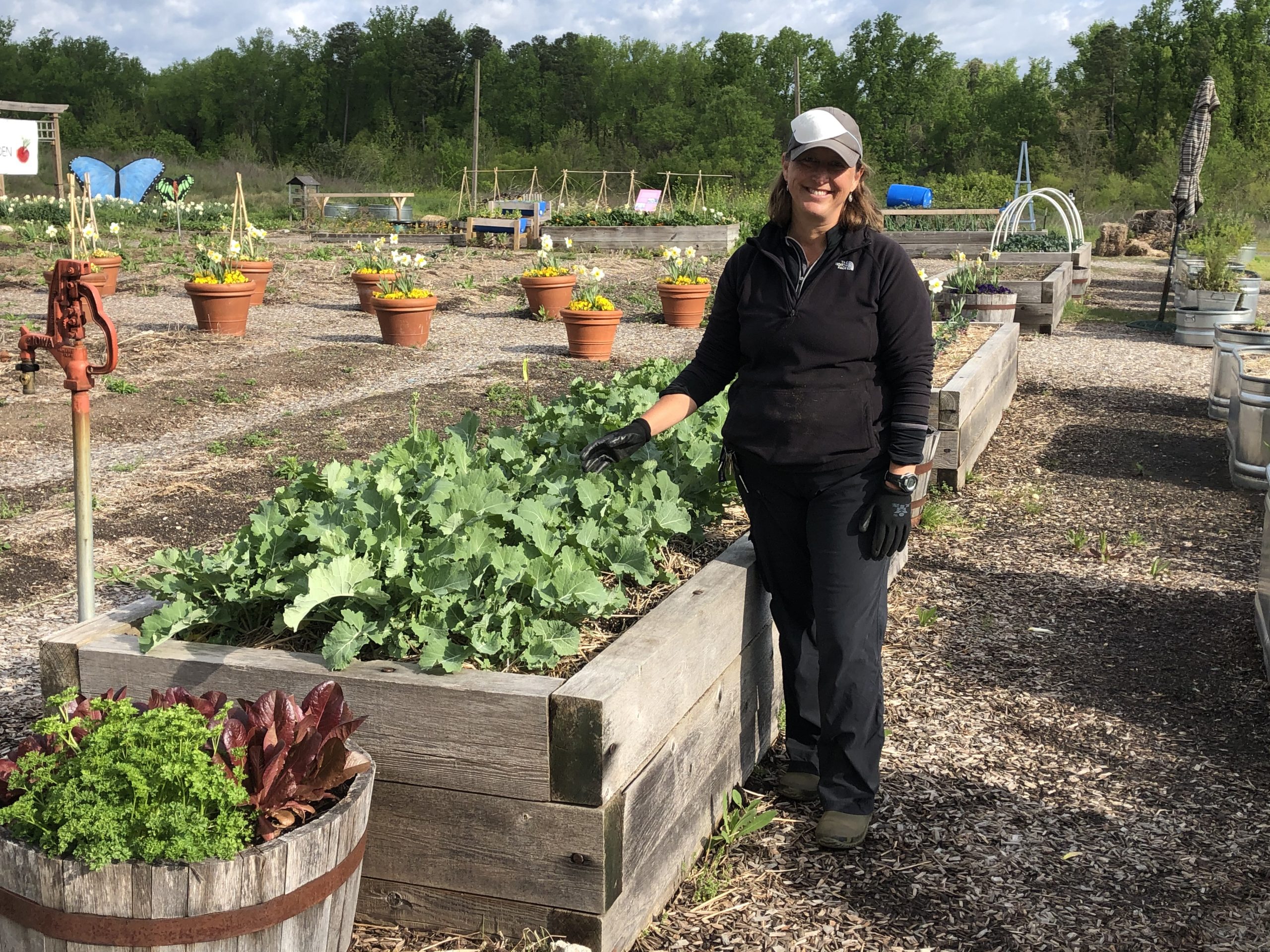Tips for Starting Your Vegetable Garden
Need some tips for starting your vegetable garden? We have them here! Lewis Ginter Botanical Garden’s Senior Horticulturist Laurel Matthew recently shared some of her insight on Facebook Live and and we posted it to YouTube as well. Laurel was kind to provide some helpful information she’s learned over the years (below).
Laurel works hard growing fresh veggies in the Kroger Community Kitchen Garden. The produce is then donated to Central Virginia’s foodbank, Feed More. Take a quick look around the Kroger Community Kitchen Garden in April of 2020.
Note: as we write this blog post, it is the end of April 2020, and we are in the midst of the coronavirus (COVID-19) pandemic. Many people are interested in vegetable gardening right now for a number of reasons—stress relief, food security, exercise—and Laurel offers tips for starting your vegetable garden.
Going to the grocery store during this pandemic is more perilous and stressful than ever. At the same time, maintaining your health, strength, and peace of mind are more important than ever.
THREE BENEFITS OF VEGETABLE GARDENING
Gardening should be relaxing and therapeutic. “Plant what you love,” Laurel says, “and take as many beauty breaks as possible.” In a world that often seems chaotic, working in your garden is one thing you can control. “You can always stop when you want.”
Growing at home guarantees the freshest possible produce. There’s definitely a thrill that comes with growing your own food; it’s healthier and tastes better, too!
Gardening is a fun activity for the entire family. All ages can participate and you can sneak in some learning, too. Gardening is the perfect hands-on learning opportunity with activities related to math, science, language arts and visual arts.
TIPS FOR STARTING YOUR VEGETABLE GARDEN: MAKE A PLAN
Laurel suggests you start by asking yourself the following questions:
What do you want to prepare and eat? Are you a pasta fan? Eggplant on the grill? Root vegetables for storage? Do you want to make your own herbal tea? Will canning be the skill you learn during quarantine?
Think about your space and light conditions. Do you have a sunny window? A sunny spot in your front yard? A place to put a raised bed? A quarter-acre?
How much time and energy do you have? Start small. Remember the point about gardening being relaxing and therapeutic? Laurel takes the pressure off by reminding us no one is the “perfect” gardener. “Growing a plant successfully takes a few seasons,” she says.
When you think you know what you want to grow, you can either grow from seed or buy plants. Laurel says if you are buying online, there may be some delays in shipping due to high demand and the fact that sellers are prioritizing commercial growers.
Laurel suggests ordering seed catalog for lots of great options and information. Be sure to read the seed packets; they provide the information you need about conditions, when to plant and when to harvest. You may already have some old seed packets and here is some more information if you are wondering if they are still viable.
KALE, CHARD, LETTUCE AND MUSTARD GREENS
Currently, Laurel is harvesting kale, chard, lettuce and mustard greens to donate to Feed More. A reminder, if you’re thinking of planting kale and lettuce now, keep in mind they are typically cool-weather crops. Be sure to choose heat-tolerant varieties for late spring/summer growing.
- Kale is high in iron, antioxidants, calcium and Vitamins A, C and K. It’s also low in calories, has lots of fiber and no fat.
- Chard provides much of the same benefits as kale, but has 15% more iron.
- Interestingly, mustard greens have fewer calories, but more protein and calcium.
SOME OF LAUREL’S FAVORITES: TOMATOES!
Anyone who knows Laurel knows she has a thing about tomatoes. Here are some of her favorites (below). She also says tomatoes grown from seed can be planted outside about six weeks after seeding and when temperatures are consistently 65 degrees F and higher.
Good for Patios
Tomato ‘Patio Choice Red’ and ‘Patio Choice Yellow’ from Park Seed
One-half-ounce bright red cherry tomatoes on short determinate vines that stay about 18 inches tall and 18 to 20 inches wide. Perfect for urban or small space food gardeners; great in hanging baskets.
Other Favorites
Tomato ‘Celebrity’ (Laurel gets these from her favorite produce stand Pole Green Produce in Mechanicsville, VA)
Seven to eight-ounce globe-shaped fruit; vigorous determinate; disease-resistant
Tomato ‘Favorita’ from Johnny’s
Loads of round, deep red, cherry tomatoes on long trusses; indeterminate; should be pruned to one to two stems and trellised up a strong.
Tomato ‘Clementine’ from Johnny’s
Tangerine-colored, oval-round fruits; indeterminate
New this Year: Micro Tomatoes!
- Tomato ‘Orange Hat’ from Baker Creek Heirloom Seed
An extra dwarf bush plant that grows six to nine inches high - Tomato ‘Micro Tom’ from Baker Creek Heirloom Seed
The world’s shortest tomato plant; it’s fairy garden size! Six to eight inches tall with a red, tasty, one-ounce fruit.
No matter what you grow, we hope you’ll find these tips for starting your vegetable garden helpful. Stay tuned as we periodically highlight what’s growing in the Kroger Community Kitchen Garden. We hope you’ll veg out with us often. (And Laurel send a very special message to her volunteers: “I miss you all and can’t wait to see you once conditions allow!)
